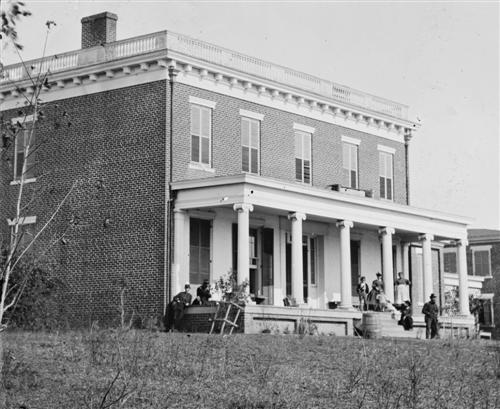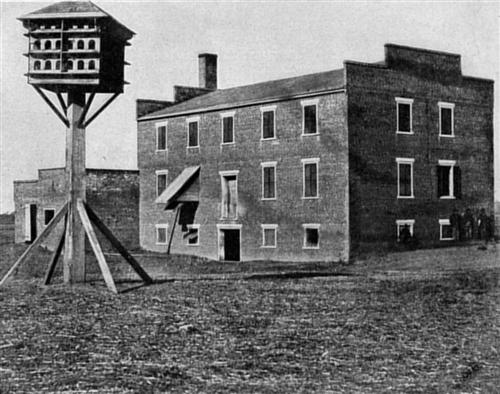|

Aiken's House in 1864
A Glad Sight for the
Prisoners
On top of the gentle slope rising from the river at
Aiken's Landing stands the dwelling of A. M. Aiken, who gave the locality
his name. For a short time in 1862 Aiken's Landing, on the James River just
below Dutch Gap, was used as a point of exchange for soldiers captured in
the East. Many prisoners from the Eastern armies in 1862 lifted their tired
eyes to this comfortable place, which aroused thoughts of home. There was
not likely to be any fighting in a locality selected for the exchange of
prisoners, and in this photograph at least there are women and children. At
the top of the steps stands a woman with a child leaning against her
voluminous skirts, and a Negro "mammy" with a large white apron stands on
the other side of the pillar. Some Union officers are lounging at the near
end of the porch. The mill shown in the lower photograph was owned by Mr.
Aiken. His rude wharf stretching out into the river enabled the neighboring
farmers to land their corn, which they brought to be ground. The structure
in the front is a martin-box, a sight common in the South today. Martins are
known to be useful in driving hawks away from poultry-yards.

The Mill near Aiken's Landing |
